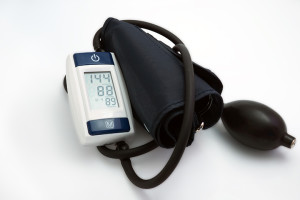What Is Hypertension?
To better answer the question "What is hypertension?" you should understand how blood pressure is measured.
High blood pressure, also known as hypertension, can be a factor in coronary artery disease (CAD), heart failure, and stroke. But what is hypertension (otherwise known as high blood pressure)?
Well, blood pressure is just the force of blood against the inside walls of the arteries. Hypertension is a condition in which that force is greater than normal. Unfortunately, there are seldom high blood pressure symptoms to let you know that there’s a problem. That’s why hypertension is sometimes called “the silent killer.”
Digging In: “What Is Hypertension?”
To better answer the question “What is hypertension?” (and a common related question: “What is the condition called prehypertension?”), you should understand how blood pressure is measured. It’s calculated in two parts: systolic and diastolic pressure. Systolic pressure is the force of blood against the artery walls when the heart contracts. Diastolic pressure measures that force when the heart relaxes and fills with blood for the next contraction.
Your blood pressure is given as the systolic pressure over the diastolic pressure. For example, a blood pressure of 120 mmHg/70 mmHg is considered normal blood pressure. The mmHg measurement refers to millimeters of mercury.
The American Heart Association rates hypertension by stages: prehypertension, Stage 1 hypertension, and Stage 2 hypertension.
- Prehypertension is the stage just below the level at which a person is considered to have high blood pressure. It should be looked at as a warning sign than steps should be taken to avoid advancing into Stage 1 high blood pressure. Prehypertension was defined up until late 2017 as having a systolic pressure of 120 to 139 mmHg and a diastolic pressure of 80 to 89 mmHg. But the AHA and the American College of Cardiology (ACC) teamed up on a new standard, lowering the threshold for hypertension to 130/80. (See our post New Hypertension Guidelines: Rethinking Blood Pressure Standards.)
- Stage 1 hypertension is defined as systolic blood pressure of 140 to 159 mmHg and a diastolic pressure of 90 to 99 mmHg. Stage 2 hypertension is a systolic pressure of 160 mmHg or higher, or a diastolic pressure of 100 mmHg or higher.
What Is Hypertension, Exactly? Breaking Down Complexities
It’s actually a little more complicated to determine what hypertension is these days, because health experts are split on the question of appropriate blood pressure targets. Some research suggests that individuals over age 50 should get their blood pressure down to 120 mmHg for the best outcomes. Other studies have suggested that older adults, in particular, are just fine with a 140 mmHg systolic pressure and experience no high blood pressure symptoms.
Blood pressure is dependent on several bodily processes. The kidneys, for example, must maintain the proper balance of sodium and fluid in the body for blood pressure to remain normal. If the kidneys don’t excrete enough fluid, the volume of blood expands and places more pressure on the arteries.
Another cause of hypertension is due to a change in the renin-angiotensin-aldosterone system. The hormone angiotensin helps widen or narrow blood vessels. Constricted blood vessels lead to higher blood pressure. Aldosterone affects the kidneys’ ability to balance fluid and sodium levels.
Lifestyle Issues
An unhealthy lifestyle is also a major risk factor for high blood pressure. Obesity and a diet high in sodium are common culprits, as are smoking and drinking alcohol to excess. A lack of regular physical activity can also lead to high blood pressure.
If your blood pressure is severely high (usually well above 160/100 mmHg), you may experience symptoms such as a headache, nosebleed, and fatigue. It’s possible you could experience those high blood pressure symptoms at an earlier stage. It’s also possible that you may not even notice any signs, even in a hypertensive emergency.
So remember that you can’t count on high blood pressure symptoms to alert you to this serious cardiovascular problem. In fact, unless your high blood pressure is well into Stage 2 you probably won’t notice anything except the numbers on your blood pressure reading. That’s why it’s important to have your blood pressure checked regularly and follow your doctor’s advice if you have hypertension or appear headed that way.
SOURCES & RESOURCES
For related reading, please visit theses posts:
Originally published in 2016, this post is regularly updated.



 WHITE COAT SYNDROME
WHITE COAT SYNDROME  News Briefs February 2024
News Briefs February 2024  Savor the Sweet Potato
Savor the Sweet Potato 
Help yourself avoid hypertension—adopt a lifestyle that involves regular (and fun) exercise.